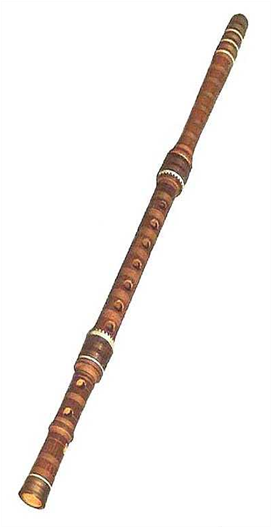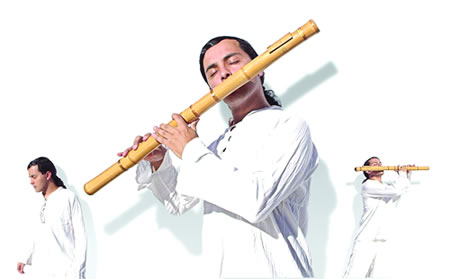
World Flutes Master

Take care of our enviroment

comprar

Peace web theme set courtesy of Crystal Cloud Graphics web set icon
Crystal Cloud Graphics
Crystal Cloud Graphics

Kaval
The kaval [ka'val] is a chromatic end-blown flute traditionally played throughout Azerbaijan, Turkey, Bulgaria, Republic of Macedonia, Kosovo / Albania (Kavall), northern Greece (Kavali or Dzhamara), southern Romania (Caval), Armenia ( Blul) and Kurdistan (Blul). The kaval is primarily associated with mountain shepherds throughout the Balkans and Anatolia and in the book "KAVAL: Traditional Folk Melodies for Balkan & Anatolian Folk Flute", author Pat MacSwyney suggests that the kaval was spread throughout these regions by Yoruk nomads who inhabited the Pindus, Shar, Pirin, Rhodope mountains of the southern European Balkan peninsula and the Taurus mountains of southern Turkey.
Unlike the transverse flute, the kaval is fully open at both ends, and is played by blowing on the sharpened edge of one end. The kaval has 8 playing holes (7 in front and 1 in the back for thumb) and usually 4 "devil's holes" down near the bottom of the kaval. The devil's holes are supposed to improve tone and intonation. There is a Bulgarian folk tale in which the devil tries to out-play a shepherd in a musical dual. While the shepherd is sleeping, the devil drilled holes in the shepherds kaval but instead of ruining the kaval, this only served to enhance the shepherd's kaval playing thus thwarting the devil. While typically made of wood, kavals are also made from Arundo donax Linnaeus 1753 (Persian Reed), metal and plastic.
The kaval [ka'val] is a chromatic end-blown flute traditionally played throughout Azerbaijan, Turkey, Bulgaria, Republic of Macedonia, Kosovo / Albania (Kavall), northern Greece (Kavali or Dzhamara), southern Romania (Caval), Armenia ( Blul) and Kurdistan (Blul). The kaval is primarily associated with mountain shepherds throughout the Balkans and Anatolia and in the book "KAVAL: Traditional Folk Melodies for Balkan & Anatolian Folk Flute", author Pat MacSwyney suggests that the kaval was spread throughout these regions by Yoruk nomads who inhabited the Pindus, Shar, Pirin, Rhodope mountains of the southern European Balkan peninsula and the Taurus mountains of southern Turkey.
Unlike the transverse flute, the kaval is fully open at both ends, and is played by blowing on the sharpened edge of one end. The kaval has 8 playing holes (7 in front and 1 in the back for thumb) and usually 4 "devil's holes" down near the bottom of the kaval. The devil's holes are supposed to improve tone and intonation. There is a Bulgarian folk tale in which the devil tries to out-play a shepherd in a musical dual. While the shepherd is sleeping, the devil drilled holes in the shepherds kaval but instead of ruining the kaval, this only served to enhance the shepherd's kaval playing thus thwarting the devil. While typically made of wood, kavals are also made from Arundo donax Linnaeus 1753 (Persian Reed), metal and plastic.









